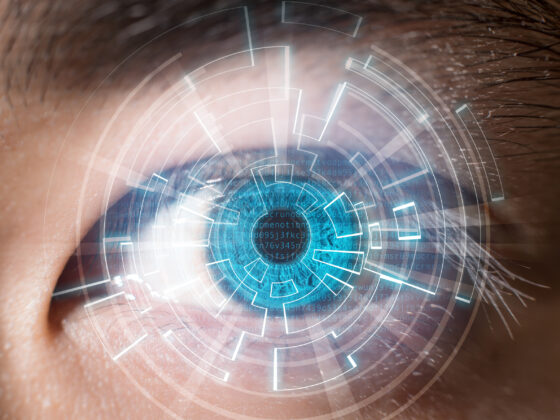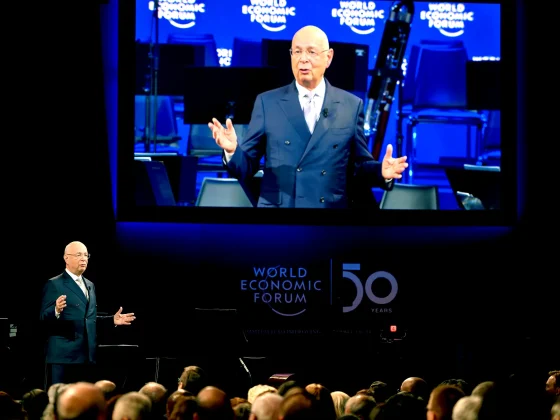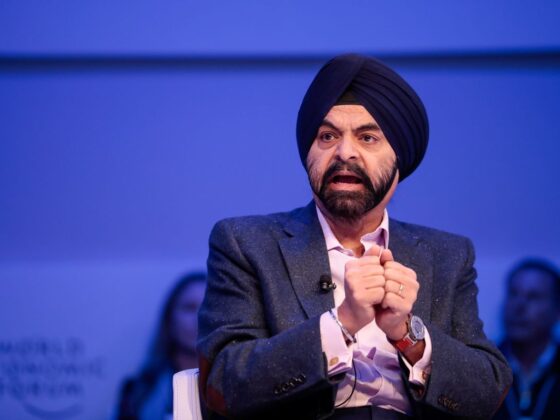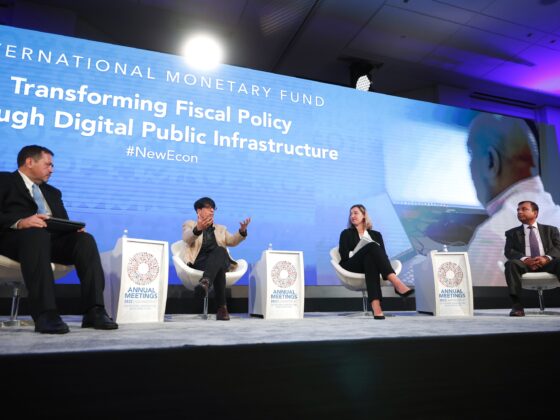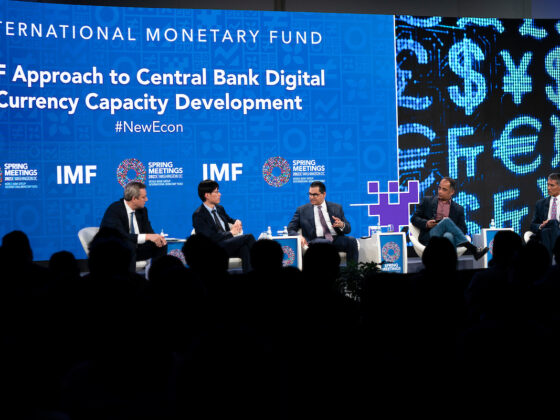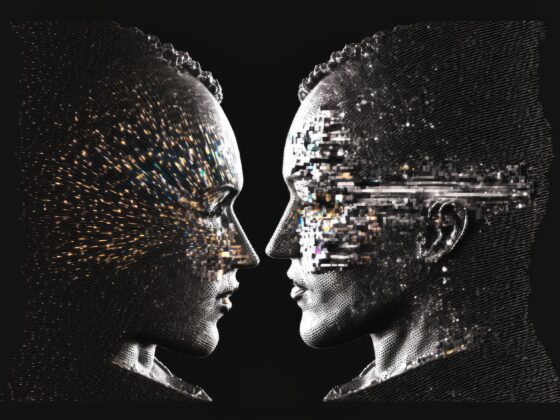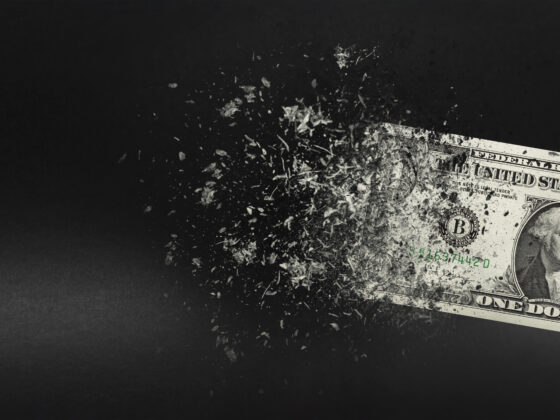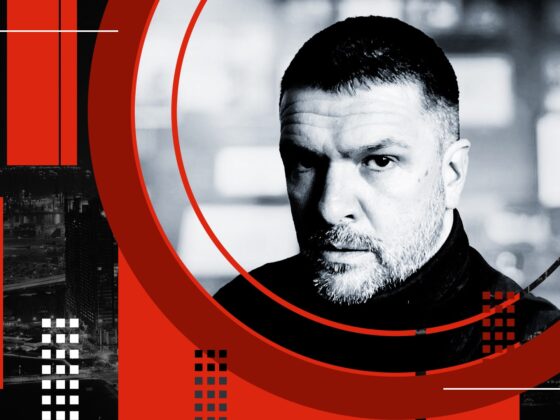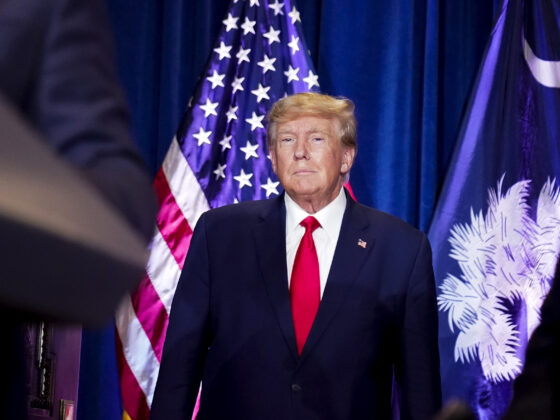Once CBDCs are implemented, there will be no more freedom. None at all. – CBDCs is the last nail in the coffin.
“Money is probably the most successful story ever told. It has no objective value… but then you have these master storytellers: the big bankers, the finance ministers… and they come, and they tell a very convincing story.” — Yuval Noah Harari
“People have a long history of letting other people do complicated things for them.” — Jordan Peterson
To understand how we will all come to accept a central bank digital currency (CBDC), we must familiarize ourselves with the Story of Money and how the Money Masters fooled us into believing it.
That’s easy to say. However, unless we are willing to throw away all technological devices and live as outcasts off the grid, we will accept it.
Now that I’ve got that out of the way, let me tell a little story about computer games.
My youngest son used to play a computer game called Knight Online. The game was released in 2003 when he was 9 years old. It was a great game back then; I don’t know about now. Players were thrown into a medieval world where they had to barter and sell, build alliances, negotiate treaties, work towards goals and receive rewards for doing so.
Technology is amazing. Computers opened up exciting new ways for children to learn. The games seemed innocent enough. Kids quickly outpaced their teachers in terms of computer skills. Technology became the language of our children. They were able to access information far beyond, and in much more interesting ways than what their teachers could offer them. School became even more boring than it was before. My son learned more from Knight Online than he could ever learn in school. He met kids from all over the country, became friends with a boy his age in New York. He even met a kid in Turkey and learned some Turkish.
Knight Online, like a lot of other games, started out free. But then, the elite figured out a brilliant way to exploit these new technologies, just like they do with everything. They fooled people into buying fake things in online worlds. It sounds crazy, doesn’t it, just reading it like that. But it’s true.
Now, those online worlds are becoming realer and more relevant than the real world. At the same time that people are suffering with no heat in the real world (for the good of the planet), kids can buy a mansion in a virtual world and never worry about how hot or cold their avatar feels. The house the avatar lives in, the clothes it wears, the commodities it possesses have all been bought with virtual tokens that are meaningless in the real world.

Adults reading this might not believe it. You might think I am exaggerating. But that’s because you aren’t a kid. Check out this link that tells parents to accept the inevitable that their kids are living in virtual worlds. The important thing is to make sure that the world is “family-friendly.”
And if you still think that sounds fringe, have you ever listened to ten-year old’s talking to one another online? They can spend hours discussing their latest purchases in the worlds they are building inside their tablets and their phones.
Meet your next metaverse friends
Interact, chat and dance with AI virtual beings. Explore new worlds. Break the next digital frontier with Sensorium App.

Check out these 8 virtual worlds for teenagers. Here’s the top world, called Disney Superbia:
Being citizens of the city, players have the liberty to choose their customized avatars by donning different hairstyles, choosing their eye colors, and designing their outfits. Players can renovate their virtual homes using different decorative pieces and items and visit the virtual homes of their favorite Disney characters.
This is one of the best virtual worlds for teenagers in which players can create desserts for the ice cream parlors from scratch and undergo a fun series of other such cool challenges to earn coins and unlock a variety of decorative items, fashionable outfits, and new furniture.
You might say, what does this have to do with CBDCs? Well, everything. The games and then the virtual worlds our children inhabit are the clearest evidence we have of how this devious, scripted change from the tangible to the intangible has taken place.
Yes, it used to be so simple. Bartering one thing in exchange for another—in the real world.
How did we stray so far? How were the masses fooled into exchanging real freedoms for fake ones?
Looking at a condensed history of money, what came after bartering?
Coins. The bigger the pile of coins, the more power one had to buy and sell. But what to do with that pile of coins—and eventually, paper—sitting right there in your home for all the world to see? What if someone wanted your pile? They might steal it. They might even kill you in the process. Very dangerous!
And so, the Money Masters were born. Men like J. P. Morgan, David Rockefeller, David Rene Rothschild, Mario Draghi, C. D. Deshmukh, the list goes on. These visionaries saw ways to exploit the fear the public had of losing their money. They started telling money stories. Whoever told the best stories became the most trusted Money Masters. It was all about trust. People needed to trust whoever they were going to give their money to. The Money Masters promised to keep everyone’s money safe in places called banks.
From there, the Money Masters really started complicating things. They held onto everyone’s money, yes, and that seemed to work well. But they started to say there were ways to make your pile grow bigger. You could invest it. Money could be turned into other things. What money actually was started to blur. Sometimes it mysteriously disappeared—and then reappeared again. By that point, the whole process of buying and selling, the contracts, the stock market, the myriad accounts, took place without any money ever actually changing hands. Where once there were real piles of money, now there were only visions of it in people’s minds.
The very concept of money began to change. It became less real.
And as it became less real, the seductive rationalization to buy things even though you didn’t actually have the money grew. No longer could you look down at the money in your hands. You couldn’t count it out, see that you only had enough for one bottle of milk and some eggs. How limiting was that! Now you had the freedom to buy things with money that wasn’t actually there and pay for it later when the money appeared (hopefully).
And so, the credit system was born.
A Short History of Credit
CARS
In 1919, General Motors created the General Motors Acceptance Corporation to provide customers with car loans. This meant you could drive a car off the lot without having paid for it right away.
MORTGAGES
Fannie Mae was formed in 1938, the first example of the federal government creating a national network to connect investors, lenders and mortgage borrowers.
With the enactment of the GI Bill of Rights in 1944, American families increased their home-borrowing from 19% of households in 1949 to more than 40% by 1967.
CREDIT CARDS
The first credit card was the Diners Club card in 1950. The card was used for travel and entertainment and the balance had to be paid every month.
In 1951, the first bank credit card was introduced by Franklin National Bank. By 1953, there were 60 credit card plans in the United States.
In 1958, most credit card issuers began allowing revolving credit, which meant that credit cards didn’t have to be paid off in full each month.
Growth Of Credit Bureaus
In 1968, TRW Information Systems was founded to acquire credit data, followed by the creation of TransUnion®, another credit bureau, in 1969. TRW later sold to two private equity firms as ExperianTM in 1996.
RCC changed its name to Equifax® in 1975, solidifying the three credit bureaus as we know them today: Experian®, TransunionTM and Equifax®.
The three agencies partnered with a technology company, Fair Isaac and Company (FICO®) to create a credit score and in 1989, the first FICO® Score for general use was introduced.
In 1995, Fannie Mae and Freddie Mac mortgage lenders began using FICO® scores to determine if a consumer qualified for a mortgage.
A Forbes article states that “as of the third quarter of 2022, Americans hold $925 billion in credit card debt, which is a rise of $38 billion since the second quarter of 2022. The Federal Reserve says this is the biggest jump we’ve seen in more than 20 years.”
The pressure on ordinary citizens to pay back their debts is unfathomable.
That control is being introduced in the form of a DIGITAL ID, which I discussed in my last essay Digital ID and Our Obsession with ‘Identity’, combined with a centralized bank digital currency (CBDC), which includes a SOCIAL credit score to keep you honest.
All of this will be built into our phones and eventually implanted into our bodies. The populace will accept it, as they have been conditioned to do. They will accept Grandpa Joe Biden, cool billionaire Elon Musk, do-gooder Bill Gates, financial wizard Larry Fink, visionary Klaus Schwab and all the rest of them, taking over and controlling everything.
Social Credit Scores
Klima, is an app that prepares people for this transition, making it seem like a fun game:
Klima has identified diet as one of the major personal steps a person can take to reduce their emissions footprint. Substituting cars with biking, or electric vehicles, and buying less fast-fashion and more used clothing also has an impact.
Klima’s app includes a carbon calculator, which measures a carbon footprint and allows users to offset that with a personalized monthly subscription. The company’s app also provides lifestyle tips to reduce emissions. Finally, it offers a social sharing feature so that other would-be climate warriors can join the fight to reduce greenhouse gas emissions and climate change.
It’s all a bad joke, since the massive amount of energy used in mining bitcoin is destroying the environment, not to mention the reputation upon which cryptocurrencies are founded.
The carbon footprint of a single bitcoin transaction in 2022 is roughly 775.56 kilograms of carbon dioxide equivalent (CO2), or roughly equal to the carbon footprint generated by 1,718,906 Visa transactions or watching 129,260 hours of YouTube videos.
AND YET, the creators of Klima assure us that: “Offsets can remedy and buy us a lot of time while we’re rebuilding our society.”

72% of CO2 emissions are addressable by consumer behavior.
That’s you and me.
Let’s follow China’s example, they know how to shame their citizens.
In 2014, China announced a Planning Outline for the Construction of a Social Credit System (2014-2020)
The plan states that by 2020, there would be a searchable file of every Chinese citizen that represents all the data collected from public and private companies to track their social credit.
As the Chinese government likes to say:
“Keeping trust is glorious and breaking trust is disgraceful”
It’s a moral challenge, people! How could you not get on board with that?
The government should have every right to “monitor its population using social media data, surveillance, purchasing trends, and other information.” This will encourage the populace to “keep trust” while creating “constraints against breaking trust as incentive mechanisms.” In this way, the “honest mentality and credit levels of the entire society will be raised”—or so they say.
And don’t worry, the system gives a “gracious way” to restore your score. You can “donate blood, donate to an approved charity, do community service, and do government-approved activities.”
Well, hey, that sounds like what’s being introduced here! Because remember, it is all about trust. We are all of us—everyone on the planet—learning how to give up our individual rights for the good of the one world order, trusting our leaders that they know what it best for us.
Get ready for the May 2023 World Health Assembly in Geneva when we can expect “standardized international vaccine passports to be introduced as a revision to the international health regulations.”
When the next pandemic is declared—and I’m banking on that being sometime in 2024 or 2025, only those who have a digital health certificate listing their up-to-date vaccines will be allowed to travel freely. It will all be part of your “moral duty.”
Unveiled at its most recent conference, the G20 policy declarations include the creation of guidelines for a globally coordinated response to crises, “enhanced by a technology-enabled ‘always-on’ global health infrastructure,” and a “mutual recognition of COVID-19 vaccines made by G20 members.”
Klaus Schwab, always eager to hop on a stage and offer his two cents worth, had this to say:
“What we have to confront is a deep, systemic and structural re-structuring of our world … [The] world will look differently after we have gone through this transition process.“
And nothing spells that transition more thoroughly than the introduction of CBDCs.
CBDCs are the Final Solution
Debt, the rise of credit scores, Covid, the fall of crypto, and now the introduction of a social credit system, laid the groundwork for this final solution.
Money Masters like BlackRock’s Larry Fink have the answers for us. We’d best listen to him and realize how mistaken we were to put our trust in fly-by-night gurus like Sam Bankman-Fried. Charismatic, modern-day televangelists like SBF are pawns, rising to power because they have been allowed to do so and taking the gullible public along with them. And then they were brought down, and the gullible public fell, too.
Whereas once cryptocurrency and bitcoin promised freedom, the story now shows us how decentralized cryptocurrency is too easily corrupted. This new story is hard to dispute in light of these crashing crypto giants.
Best return to the fold, wayward sinners!
Return your trust to the tried-and-true government-backed institutions, like Fink advises. They will fix the problem and take care of you. And when the next pandemic strikes, don’t worry. We will have that taken care of, too. But only if you start taking your boosters and all the other gene therapies we are going to introduce into your immune-compromised system.
By that point, we will find ourselves imprisoned by constant tracking, testing and tracing, we will live off our universal basic income, we will spend our tokens within the limits of what the government deems is necessary.
Remember, we are all in this together. We are all one.
During an interview at the New York Times DealBook Summit, Fink said most crypto companies will probably fold in the wake of FTX’s collapse.
BlackRock, the world’s biggest asset manager overseeing about $8 trillion, invested roughly $24 million in FTX through a vehicle called a Fund of Funds. However, Fink himself says he has always been a long-time skeptic of cryptocurrencies.
Of course! Never mind that it’s all one big contradiction. The guy’s smarter than any of us will ever be. Look how successful he is, he must be doing something right! He’s the kind of guy we can trust.
FTX was invested in by the Money Masters and then purposely made to fail.
Money managers from Wall Street to Silicon Valley and beyond poured billions of dollars into FTX, pushing its valuation as high as $32 billion before it imploded earlier this month. Firms including Sequoia Capital and Tiger Global Management have since marked down their stakes to zero, as FTX and more than 130 affiliated entities went bust.
Living in the world of the elite can be a dangerous game.
Russian crypto billionaire Vyacheslav Taran, the co-founder of Forex Club and president of the Libertex Group, recently died in a helicopter crash near the French-Italian border while traveling from Switzerland. Taran’s company markets itself as a leading foreign exchange and trading platform for Bitcoin (CRYPTO: BTC), Ethereum (CRYPTO: ETH) and Dogecoin (CRYPTO: DOGE).
Just in the last month, three well-known cryptocurrency billionaires have died under mysterious circumstances
What’s going on? The only reason I can think of that SBF isn’t dead or in jail yet is because he still has a task to do, pushing the narrative that crypto needs more government control.
The government can now sweep in and “save” everyone with regulations, restrictions and the introduction of CBDCs.
The United States is said to be the most stabile country on earth. It maintains this position by ensuring that other countries are less stable. Under the guise of generously loaning funds to poorer countries, the United States enslaves them.
The World Bank gained power in this manner. The World Bank is a bank for nations, not people. People are irrelevant. And the more we think globally, the less the individual matters.
The World Bank has two separate groups.
-
the International Development Association, provides loans to the world’s poorest countries.
-
the International Bank for Reconstruction and Development, gives loans to developing countries.
It sounds nice, helping all those poorer nations. But it’s like receiving a loan from the mob. Yes, it’s convenient, you can get it right away. But the interest you will pay, the things you have to do, will keep you the slave of the mob forever.
Here are the top six most powerful International Organizations:
- United Nations Organization (UN)
- United Nations Children’s Fund (UNICEF)
- World Health Organization (WHO)
- World Economic Forum
- International Monetary Fund (IMF)
- World Bank
All of these organizations are headquartered in the United States or Switzerland. UNICEF, WHO, and IMF are all part of the UN. If you look into these organizations, you notice that philanthropy in the form of loans to weaker nations is used as a way to gain more power.
According to its website, the IMF works to “foster global growth and economic stability by providing policy advice and financing the members by working with developing countries to help them achieve macroeconomic stability and reduce poverty.”
This process of controlling others through “philanthropy” works very well.
FTX claimed to give generously through a method called “effective altruism.” Ukraine was said to benefit from it. Money has been pouring into Ukraine without any oversite. Ukraine will never get out from under the control of the powers that own it. It is being used as a testing ground for CBDCs. Ukraine is on course to issue a Central Bank Digital Currency (CBDC), the e-hryvnia, after President Volodymyr Zelensky signed the ‘On Payment Services’ law.
The United States and other western nations are now doing the same thing to their own citizens that they did to weaker nations.
Imagine if everyone’s debt could be wiped out, everyone could get their housing for free, an allowance for basic needs.
86% of central banks are actively looking into a CBDC
Nearly two-thirds of European, Asian and US adults said they would be likely to use a central bank digital currency (CBDC).
33% said they would even be willing to convert their savings into CBDC within a month of a successful launch.
Guardtime believes that the COVID-19 pandemic has accelerated the digitalization of all aspects of society and that the first major CBDC could be launched within three years.
And now it’s all coming together. It’s just been announced that Banking giants and the New York Fed will start a 12-week digital dollar pilot program.
Just like the United States swept in to aid poorer countries suffering from wars and economic disasters, “the collapse of cryptocurrency exchange FTX, and the worldwide outcry over the billions of dollars wiped off the platform, are likely to trigger a massive regulatory reaction that would further erode citizens’ economic freedoms without addressing the issues that fostered demand for an alternative to the fiat dollar,” economists have told The Epoch Times.
Charles Steele, chair of the department of economics, business, and accounting at Hillsdale College in Michigan, states that:
“I think a CBDC is very dangerous, because it would enable a central bank or government to monitor, control, and record every exchange made with the currency. If, for example, a government decided it did not want citizens buying, say, firearms, or perhaps donating funds to a political candidate, the central bank could prevent the transaction. Alternatively, it could have a permanent record of a citizen’s purchases and use these to establish a social credit score for the person. In this way, a CBDC could become the ultimate tool of social engineering and tyranny.”
Once upon a time people bartered for real things in the real world. Then, they started using coins and paper and called it “money.”
They will especially take care of your grandchildren.
Instead, they will earn tokens in a virtual world to buy things that don’t exist. In the real world, they will own nothing and be happy.
If I had known all of this back when my son was playing Knight Online, would I have stopped him? How could I? There was nothing wrong with the game. He learned so much from it. And that’s the problem. There is nothing wrong with technology or the ideas behind it. What’s wrong is how the elite use it to further their own power by enslaving everyone else.
CBDCs is the last nail in the coffin.


